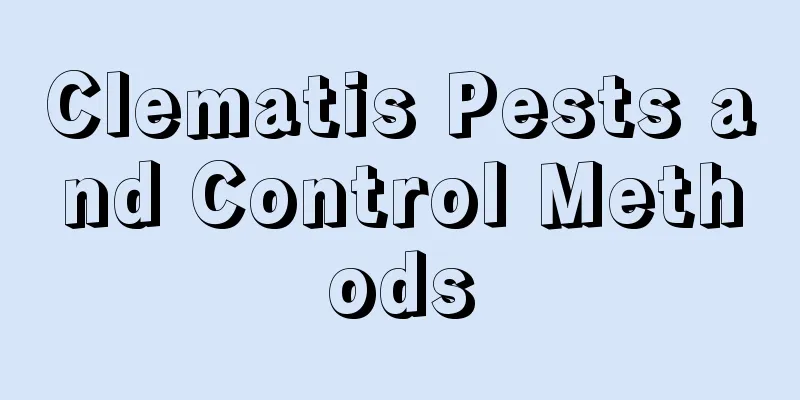Clematis Pests and Control Methods

Clematis Pests: AphidsBoth black and green aphids will attack clematis. Spring to early summer is the peak season for aphids, so special attention should be paid. Aphids usually gather at the top of young shoots, on stems or on the back of leaves, eating the leaves and flesh of the plants. A large amount of insect feces will contaminate the plants. After the clematis enters the growing season in spring, you should always observe whether there are aphids on the leaves. If the situation is serious, you can spray some insecticide. Note that if the bottom of the plant is too dry, it will cause aphids to gather, so the surrounding environment should be kept moist to reduce the occurrence of aphids. Clematis Pests: CaterpillarsMost caterpillars emerge in early spring and prefer to be active at night, feeding on new leaves and flower buds. Properly increasing the light at night can reduce the gathering of caterpillars, or spraying pesticides can kill pests. Clematis Pests: Leaf MinerThe larvae of leaf miners often shuttle between leaves, forming one or more irregular gray-white curves on the leaves, forming spots at the ends. Leaf miners will not have a significant impact on the growth of the plant, but will only reduce the ornamental value of the leaves. In the early stages of leaf miner infestation, the affected leaves can be cut off and thrown away. Note that the spots at the end of the curve of the leaf surface contain the larvae of the leaf miner. Be sure to cut off the spots completely and destroy them. If the infected area of the plant is large, remove the leaves and spray the plant with appropriate amount of pesticide. Clematis Pests: SnailsSnails are mollusks that prefer warm and humid environments. They reproduce in large numbers in spring and devour tender leaves and buds, causing serious damage to plants. But they are afraid of light and heat. They hide in humid, shaded areas during the day and come out to look for food at night. Wherever it crawls, it will leave glowing mucus, which not only affects the growth of the plant but also looks unsightly. Spraying 70 to 100 times the concentration of ammonia water at night can kill pests on a large area and also achieve the purpose of fertilization. Alternatively, choose diatomaceous earth and charcoal ash and bury it at the roots or spray it with water. |
>>: Flowers also suffer from insect damage
Recommend
The most common varieties of flowering cactus
White sandalwood Sandalwood is a common flowering...
How to plant red spider lily
1. Planting time The best time to plant red spide...
How to plant raw melon seeds
1. Planting method When planting, the hole tray s...
What is used to graft plum blossoms?
1. Plum anvil Using plum blossom as rootstock is ...
Will urea evaporate if it is spread on the ground without rain (will it become ineffective if it is spread on the ground without rain)
Urea is a fast-acting high-nitrogen fertilizer th...
How to grow and maintain Lucky Star succulents
The Lucky Star Succulent has a relatively strong ...
How to divide mint into pots
1. Method of basin division 1. Select strong or o...
Does Acorus calamus prefer shade or sun?
Does Acorus calamus prefer shade or sun? Acorus c...
When does Michelia bloom?
1. Flowering time It usually blooms in April and ...
How to make Fraxinus chinensis bonsai
1. Cultivation To make bonsai, you can use the st...
How to plant pepper seeds
Introduction of Sichuan pepper seeds Generally, t...
How to grow banana trees to make them more vigorous
Banana Tree Growing Conditions The banana tree li...
How many kilograms of peanuts are generally produced per mu? What is the peanut yield and income per mu?
Peanut yield per mu Peanuts are a common crop, bu...
Can Sabah Jaboticaba be planted in pots?
Can Sabah Jaboticaba be grown in pots? Sabah Jabo...
Disease and Pest Control of Dendrobium roseum
Diseases Black spot It seems that many kinds of f...









